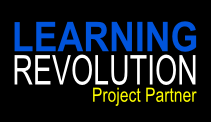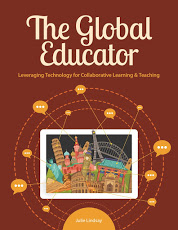Presenter: Julie Lindsay
Location: Beijing, China
Link to presenter’s K12Online Ning Profile page
Presentation Title: Learning Confluence: Where Philosophy Meets Practice in the 21st Century
Presentation Description: Current accepted forms of professional development provide opportunities for small bites and quick-fix solutions but do not encourage immersion, ongoing conversations and collaborative sharing of experiences. Adoption of a learning confluence amongst educators can and will make a difference within a school and extend the learning beyond the immediate environment.
Based on recent practice at an international school, a model of teacher engagement and improved pedagogical approach has been developed that leads the way into transformed learning in the classroom. Using a face-to-face meeting format, including expert advisers and a virtual component, educators extended their learning boundaries and embraced constructivism with the purpose of challenging themselves to ‘lean into the sharp edges’ of 21st century education.
DotSub Video Presentation Link
Blip m4v direct link (video file)
Blip mp3 direct link (audio file)
Link to presentation’s supporting documents:
http://julielindsay.wikispaces.com/K12+Online+09
Additional Information:
Julie blogs at: E-Learning Journey’s
Follow Julie on Twitter
Julie is julielindsay on Skype








Julie, I enjoyed your presentation. The introduction you provided was a reinforcement of my beliefs and values. I appreciated the chart of the 21st Century Learner, which matches the paradigm I am using as the framework for a Teaching and Learning in the 21st Century course I am teaching. Finally, the commentary by participants in the Wise Conference was only a teaser I hope to learn more about.
Gail Nelmes especially from 14:15 to the end of her comments accurately describes the nub of the problem of change in the 21st Century for many educators. An educator has to first accept the challenge of the style of lifelong learning Gail describes (not expecting to learn and move on, but accepting the necessity of learning, unlearning, and relearning) in order for that educator to begin to learn and teach in the 21st Century digital world. This is very intimidating for me and I accept it; I can imagine how threatening it is for many who refuse to accept the paradigm Gail describes.
Thanks to all who contributed to the presentation!
Thanks Dennis for your positive response to my presentation, and for watching it! Yes, the 21st C chart took about 8-10 drafts to finally define, but I still feel it is an evolution. Once again, maybe this means more to the makers than the users. The challenge that you have picked up on with Gail of course is removing ourselves from being afraid of not knowing everything. Even our subject specialization can change as new technologies and areas evolve.
What I also meant to add to this post last week were my discussion questions. Here goes:
Questions for Discussion:
1. How are you encouraging a ‘learning confluence’ in your current professional educational environment? How does this align with professional development goals?
2. What does it meant to be a 21st century learner? How has the impact of emerging technologies changed the definition of learning?
3. How important is change in education? How do we best support innovation and change while maintaining sustainability and quality?
Two very powerful comments struck me:
1) the Biz Stone quote on how small the world can become through technology. Think how the last decade might have been different if we truly understood each other and communicated as global citizens…
2) The Warlick comment (i paraphrase) that we need to focus on pedagogy rather than content of curriculum. This is something I have been saying for two decades now.
Very nice presentation. Thanks for sharing.
jkf